Natural Solutions to Things That Bug You (92 page)
Read Natural Solutions to Things That Bug You Online
Authors: Myles Bader

SUGAR APPLE
The roots and seeds can be made into a very effective toxin to many insects. The roots especially are more effective than the seeds and can be dried and powdered.
Place ½ cup of the dried preparation into 4 cups of boiling water, then allow the mixture to remain standing for about 8 hours before using it.
TOMATO LEAVES
The leaves are dried and made into a tea that can be placed in a sprayer and is very effective in controlling most chewing insects.
CHAPTER 19
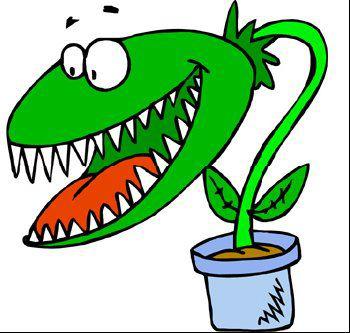
CARNIVOROUS PLANTS
CARNIVOROUS PLANTS
GENERAL INFORMATION:
Carnivorous plants should not be used to keep the insect population down in your garden or around the house or barn. They require a lot of tender care and plenty of water. While some will catch houseflies they do not have a big enough appetite to do a big job. They will eat flies, moths, butterflies and most small insects by attracting them with a sugary substance. To be called a carnivorous plant, the plant has to be able to attract, capture and kill life forms. It must also have the ability to digest and absorb the nutrients.
GOURMET BUGS FOR THE DISCRIMINATING PLANT
Your animals and small children are safe, the plants are harmless to people and animals and only produce a very weak digestive enzyme. These enzymes are not the acids we are aware of in the human stomach and are just weak enzymes that will digest small insect juices and soft tissue.
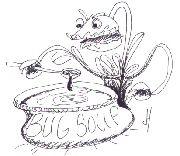
Many of the plants utilize bacteria to do the work of breaking down the bugs into a
“bug-soup”
so that they can utilize the nutrients. While others wait until the bug meal rots and then absorbs the food molecules.
The assassin bugs like the sweet substance excreted by the carnivorous plants and will eat the substance without being bothered by the plants and leave a pile of excrement for the plant to consume.
The largest carnivorous plant is the
Nepenthes
, which may occasionally catch a small frog and has large vines that will extend10-20 feet from the plant base.
THE MORE COMMON CARNIVOROUS PLANTS FOUND IN THE UNITED STATES
BLADDERWORTS (Utricularia)
There are over 210 species of this plant worldwide and the species is found in every state, even Hawaii, where it is considered a non-native weed. The largest number can be found in Florida and New Jersey. It lives above and below water; however, the carnivorous action only takes place under water.
Each plant develops a number of bladders, which are the mouths of the plant.
When a bug bumps into long hair-like organs, a trapdoor catches the bug and they are sucked in when a vacuum is formed. The trapdoor shuts in 1/30
of a second and the plant digests the bug.
BUTTERWORTS (Pinguicula)
These plants are only found in the lower 48 states and there are only eight species. The plant has leaves similar to the artichoke plant. The leaves have small glands that capture tiny insects like gnats and even have limited movement capabilities. The flowers look very much like a violet but there is no relation to the violet plant. The plant is grown mainly on trees in Mexico.
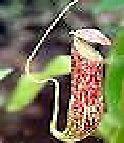
PITCHER PLANTS (Darlingtonia & Sarracenia)
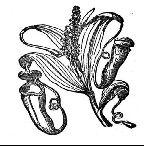 The
The
D
arlingtonia
species is found on the far west coast usually California and Oregon and is usually located near serpentine outcrops. The
Sarracenia
species are found in the southeastern United States with the largest plant population around Mobile, Alabama and are trumpet-shaped plants.
The pitcher plant secretes a number of chemicals to attract and digest their prey. Some use an insect narcotic, wetting agents or sweet substances to attract the bug and then use bacterial action to digest it. This plant will eliminate a number of insects but does not discriminate between good and bad bugs.
SUNDEWS (Drosera)
These plants are worldwide with only seven species found in the United States.
The plant has long whip-like leaves that are covered with short tentacles that contain an adhesive substance, which allows the plant to hold on to its bug prey. The prey is covered with a mucous coating and the more it struggles the more it is trapped and eventually drowns in the mucous coating. In some species the entire leaf will encircle the bug.
VENUS FLYTRAP (Dionaea)
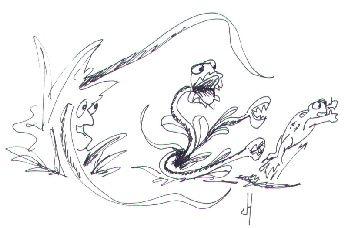 Only found in specific areas of North and South Carolina with the colonies in South Carolina about gone. Human activity has all but eliminated this species in the United States. The plant captures insects by attracting the insect with nectar to bilobed leaves, which then snap shut trapping the bug. The plants are green with areas of red on the inside surfaces of the leaves.
Only found in specific areas of North and South Carolina with the colonies in South Carolina about gone. Human activity has all but eliminated this species in the United States. The plant captures insects by attracting the insect with nectar to bilobed leaves, which then snap shut trapping the bug. The plants are green with areas of red on the inside surfaces of the leaves.
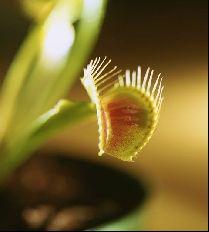
CHAPTER 20

FRUIT, VEGETABLES, FLOWERS & SHRUBS AND THEIR MOST COMMON PESTS
FRUITS, VEGETABLES, FLOWERS & SHRUBS
AND THEIR MOST COMMON PESTS
FRUIT/VEGETABLE/FLOWERS/SHRUBS DAMAGING INSECTS
Apples…………………………………………………… Coddling moth, tent
caterpillars, cankerworm, apple maggot, European red mite
Artichoke, globe……………………………………………Aphids
Artichoke, Jeruselum………………………………………None
Apricot………………………………………………………Pear borer, Oriental fruit
moth
